That timeworn saying “you can’t teach an old dog new tricks” has been doing a disservice to our beloved senior pups for far too long. Honestly, when I see a graying muzzle and those wise, knowing eyes, I see opportunity, not limitation. Your older dog’s mind is still sharp, their heart still eager to please, and their capacity to learn remains beautifully intact.
The truth is, despite the old adage, teaching an old dog new tricks is possible. What’s more, older dogs usually have longer attention spans than their younger counterparts allowing for longer training sessions, making them surprisingly excellent students. Let’s dive into eight wonderful tricks that will strengthen your bond, keep those golden-year minds active, and maybe even surprise a few friends along the way.
The Classic Shake or “Give Me Your Paw”
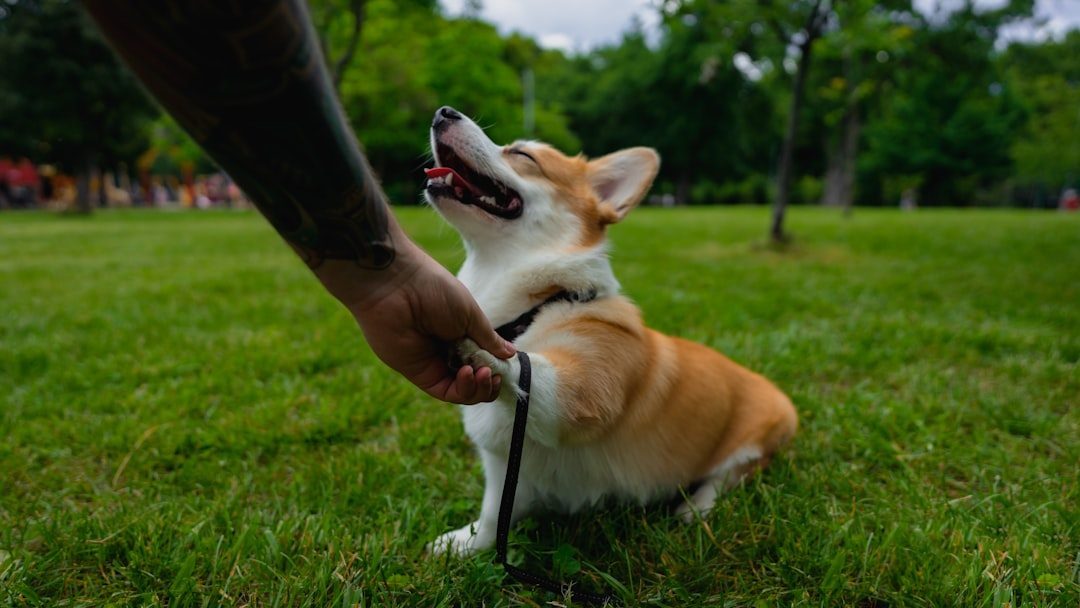
This charming trick never gets old and serves as the perfect starting point for senior dog training. If your dog already knows the “sit” command, then you can add on to this by teaching them the “shake a paw” command.
Hold a treat in your closed fist at chest level, and your dog will naturally paw at your hand to get the treat. As soon as your dog paws at your hand, click and praise, open your hand, and give the treat. The beauty of this trick lies in its simplicity and practicality.
Once your pup consistently lifts their paw when they see your closed fist, it’s time to add the magic word. When your dog is consistently placing their paw on your hand, start introducing a verbal cue of your choice. “Shake” is the most common cue, but you can use any word you wish. This trick also comes in handy for nail trims and paw cleaning after muddy walks.
The Delightful Spin

Teaching your senior companion to spin is like watching pure joy in motion. This is an easy trick that any age dog can learn. Simply stand in front of your pup, hold out a treat and say “spin”.
You may have to mimic the motion yourself for your dog to get the hang of it. When they spin in a circle, reward them with the treat. Start slowly, guiding their nose with the treat in a wide circle so they naturally turn their body to follow.
The key is choosing one direction initially to avoid confusion. It is best to teach one way at a time, so you don’t confuse them. Once they’ve mastered spinning clockwise, you can always teach counterclockwise as “spin left” versus “spin right.”
The Impressive High Five
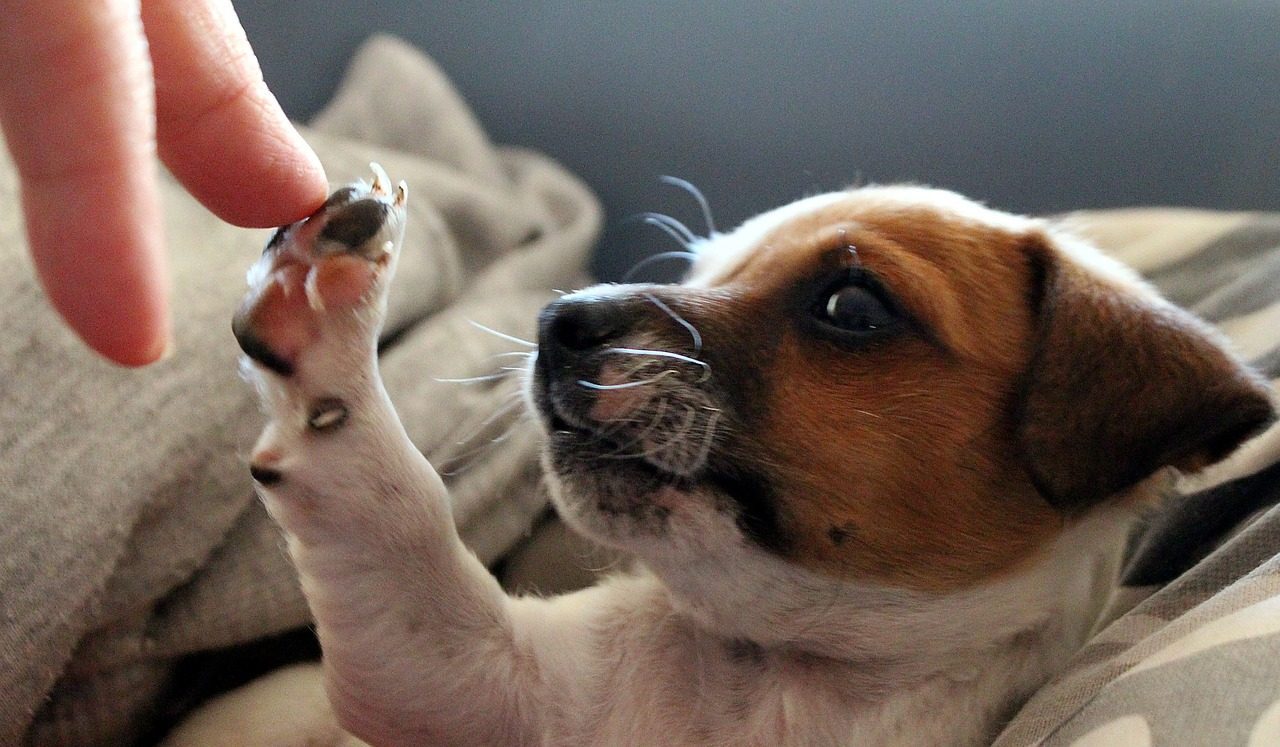
Building on the shake foundation, the high five adds a touch of modern flair to your dog’s repertoire. This trick builds on shaking hands – once your dog knows how to shake, teach them to give a high five instead! Simply hold up your hand instead of holding it out.
The positioning is everything here. Bring your dog’s paw up to your hand and say, “high five”. Reward them as soon as they touch it with their paw. Start with your palm fairly low, then gradually raise it higher as your dog becomes more confident.
Remember, short legs mean short high fives, so make sure to keep that in mind when setting expectations. Your Corgi’s high five will look different from a Golden Retriever’s, and that’s perfectly wonderful.
The Gentle “Wait” Command

This practical trick transforms mealtime chaos into civilized dining and prevents door-dashing disasters. With the dog ready in a sitting or lying position, hold up your hand like a stop sign and say, “Wait.” Place a treat on the floor in front of them. Before they can take the treat, cover or remove it. If they pause, affirm them verbally and let them have the treat.
The beauty of “wait” lies in its real-world applications. Use it before meals, at doorways, or when you need your dog to pause and check in with you. Gradually increase the time and distance as your senior student masters this essential life skill.
This command becomes especially valuable for older dogs who might need extra time to process situations or navigate physical challenges. It gives them permission to take their time while keeping them safe.
The Adorable Wave Goodbye
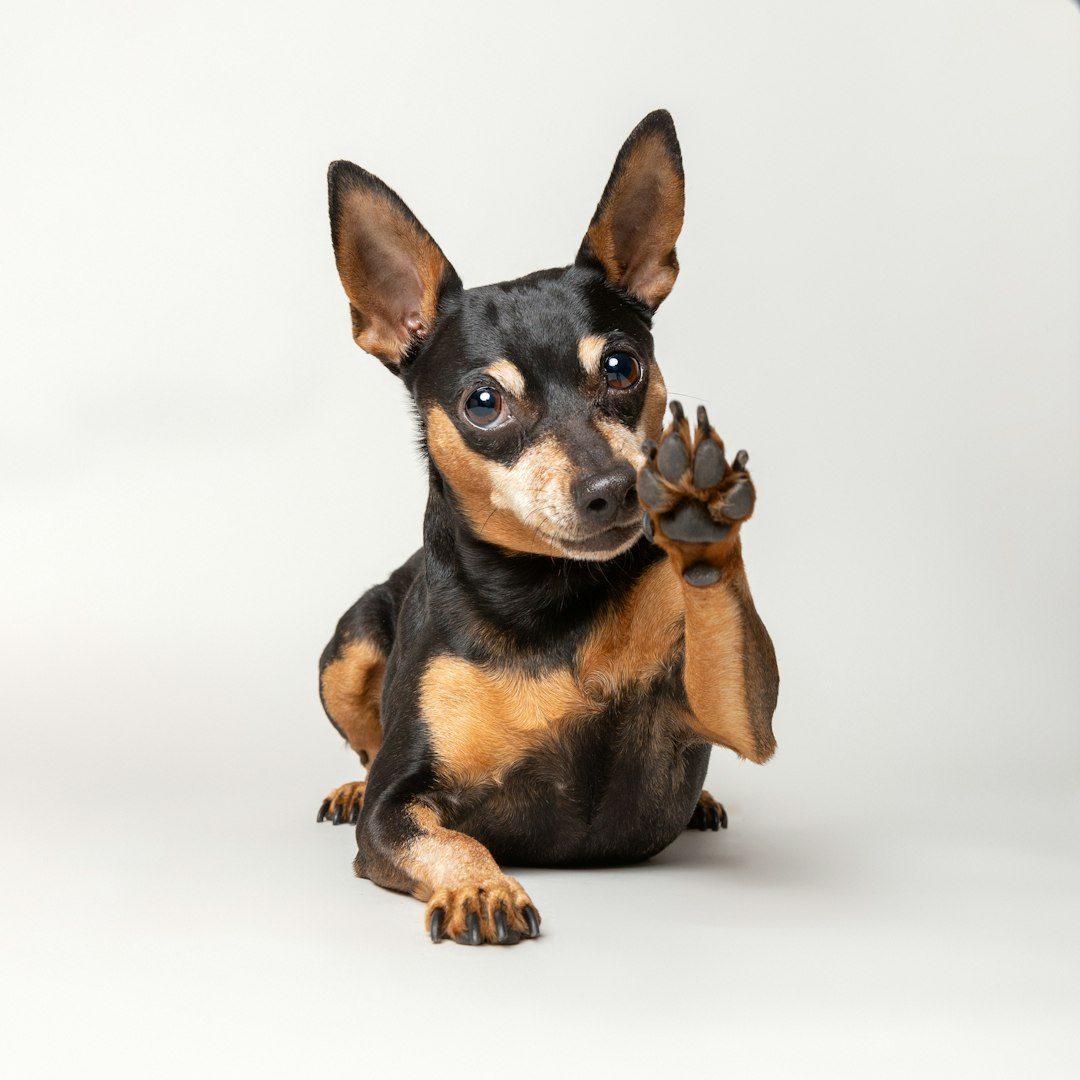
Few things melt hearts quite like a dog waving farewell to departing guests. This is an adorable trick that any age dog can learn! Stand in front of your pup and hold out your hand, saying “wave goodbye” as you move it up and down. When they paw at your hand, reward them with lots of praise and a treat.
Start by building on their natural pawing behavior. Hold your hand slightly higher than usual and wiggle your fingers to encourage that reaching motion. The moment they lift their paw toward your moving hand, capture that behavior with enthusiastic praise.
With practice, you can gradually reduce the hand movement until your dog waves simply when you say the cue. It’s a trick that never fails to bring smiles and creates wonderful photo opportunities with your distinguished senior pup.
The Helpful “Touch” or Target Training
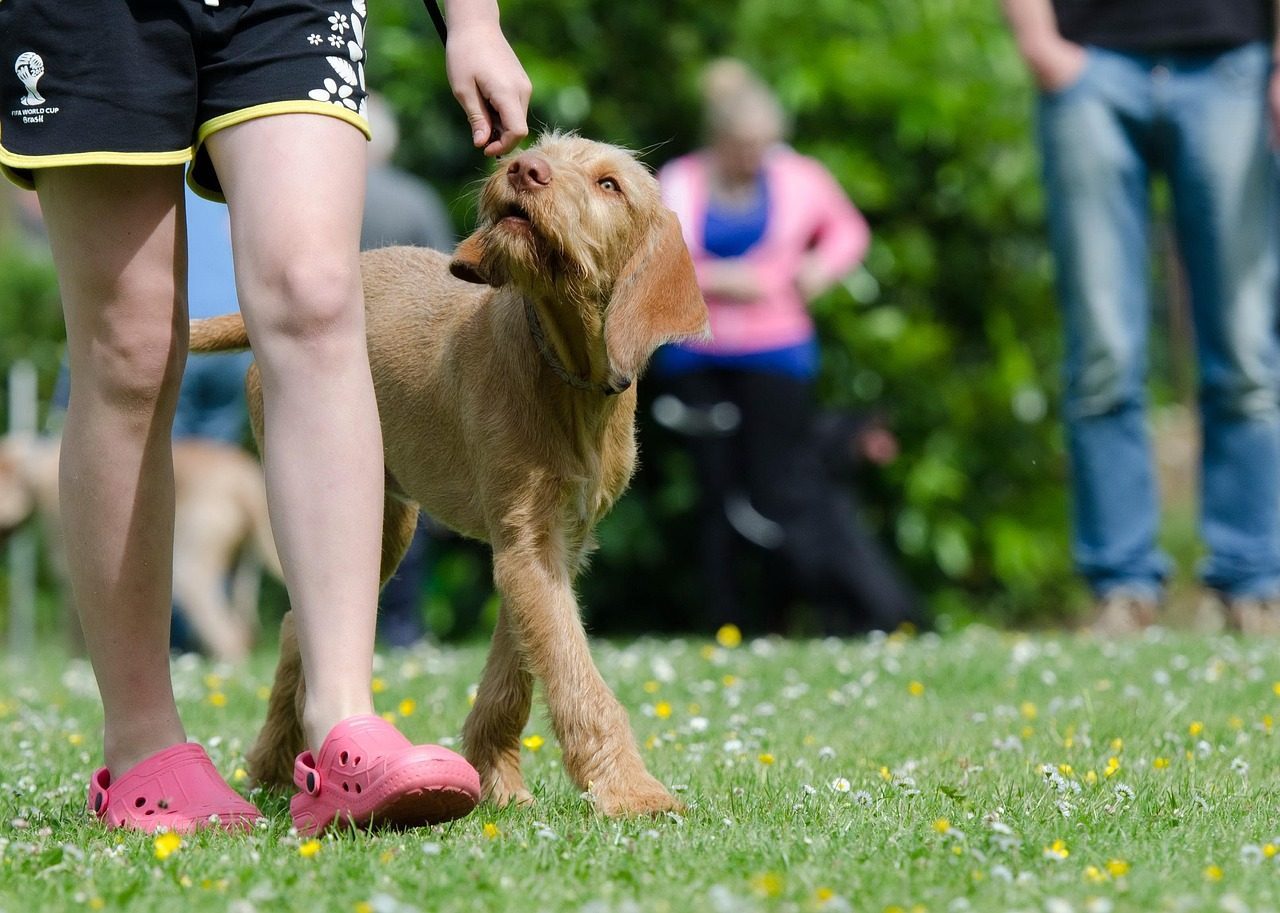
Target training is a gentle, confidence-building exercise perfect for senior dogs. Set out a towel between you and your pet. When any part of their body touches the towel say “yes” and give a treat. Toss a treat off and repeat!.
This simple trick provides mental stimulation without physical strain. Your dog learns to deliberately touch objects with their nose or paw, which can expand into more complex behaviors like closing doors or turning on lights.
This can expand to cooperative care, stationing, or even rolling the towel for balance work. For senior dogs dealing with mobility issues, target training can actually help with gentle physical therapy and coordination exercises.
The Relaxing “Go to Your Place”
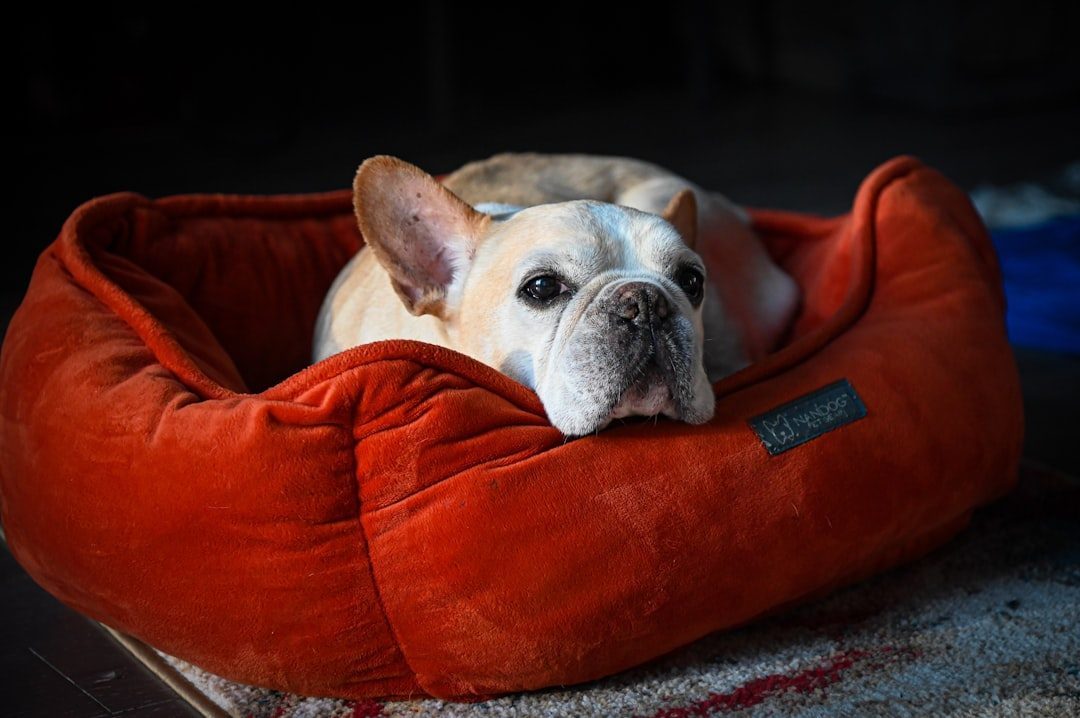
Teaching your senior dog to settle in a designated spot is both practical and soothing for aging joints. Teaching them to go to their bed, to lift a paw, or to place their head on your lap may be easier for them than more physically demanding tricks.
Start by making their special spot irresistibly appealing with comfortable bedding and occasional treats. Guide them to the area using treats and gentle encouragement. Once they’re on their bed or mat, use a calm, soothing voice to say “place” or “bed.”
This command becomes invaluable during busy household moments, providing your senior dog with a safe, comfortable retreat where they know they’ll be undisturbed. It’s especially helpful for dogs experiencing age-related anxiety or confusion.
The Classic “Speak” on Command
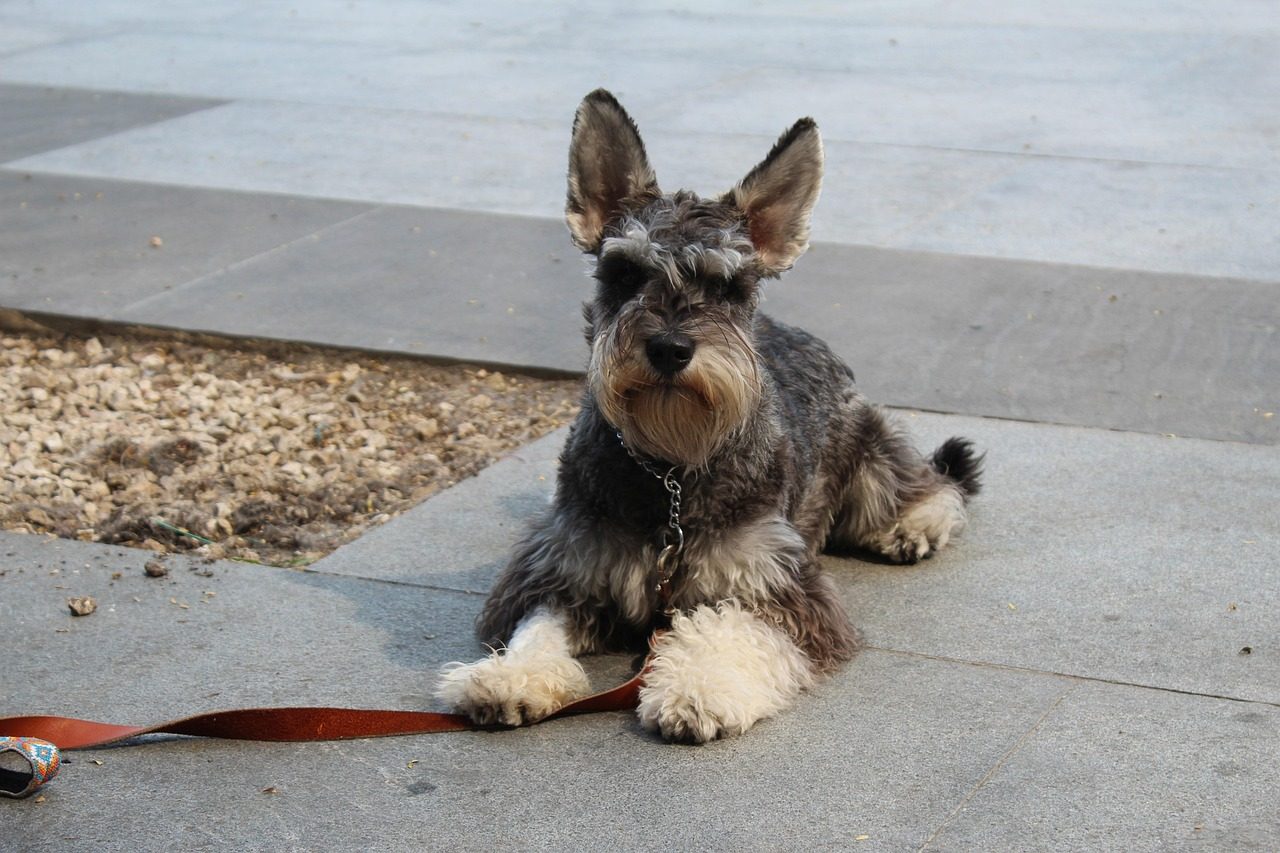
Teaching your senior dog to bark on cue gives them a voice in the conversation while also teaching them when quiet time is appropriate. Start by getting them into the sitting position and wait for them to bark or make a noise. As soon as they do, say “speak” and reward them with a treat.
Your dog may try to offer other behaviours that he’s learned, like shake or sit, but if wait a little longer, your dog will eventually get vocal about his impatience. No matter how big or small the sound, reward your pooch immediately.
Once they understand “speak,” you can teach the equally important “quiet” command. This pairing gives you wonderful control over their vocalizations and can be especially helpful for senior dogs who might bark due to hearing loss or cognitive changes.
Conclusion
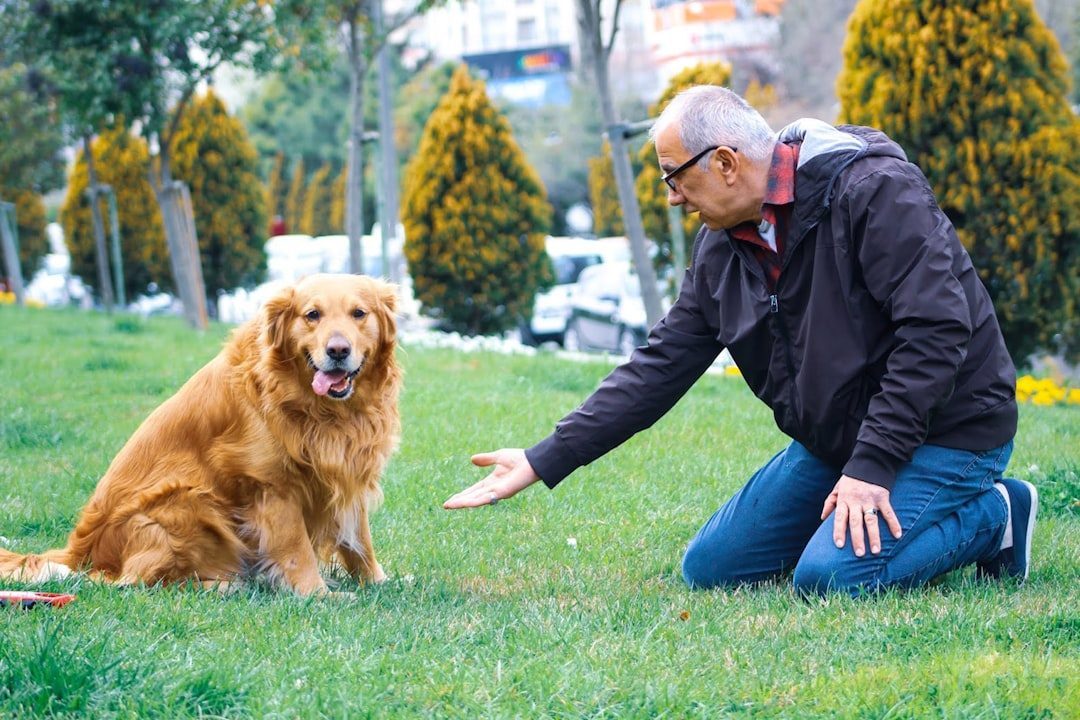
The journey of teaching your senior dog new tricks is about so much more than the tricks themselves. Time shared while learning new tricks will deepen the bond you already have with your canine friend. Plus, tricks provide mental stimulation for older dogs who may be suffering from dementia. Each training session becomes a gift of focused attention, mental exercise, and pure joy.
Remember that older dogs may need more time and patience than younger dogs to learn a new behavior. It simply takes more time and patience to train an older dog. Yet this patience is rewarded tenfold when you see that spark of understanding in their eyes and the proud wag that follows their success.
Your senior dog has spent years learning about life, love, and what makes you happy. Now it’s time to show them that learning never stops, that their minds are still valued, and that their best tricks might just be ahead of them. What new adventure will you and your wise companion embark on together? The possibilities are endless, and your bond will only grow stronger with each small victory.

Gargi from India has a Masters in History, and a Bachelor of Education. An animal lover, she is keen on crafting stories and creating content while pursuing a career in education.






